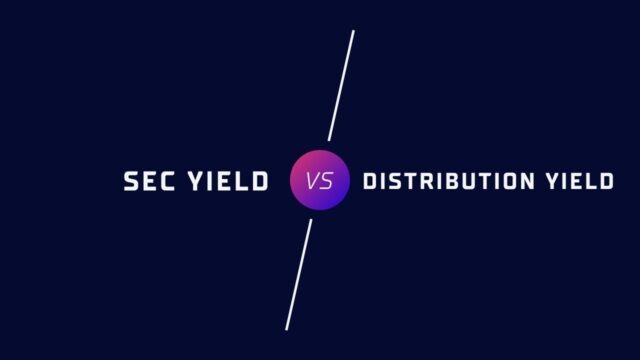
When it comes to investing, there are a lot of different terms and concepts that can be confusing. Two of the most important ones are sec yield and distribution yield. But what do they mean? How are they different? And which one should you care about?
In this post, we will break down these two terms and explain why they matter. We will also provide some examples to help illustrate the concepts. By the end, you should have a good understanding of sec yield vs distribution yield and which one is more important for your investment strategy.
What is a Distribution Yield?
In the investment world, the distribution yield is the total amount of dividends paid out by a company or fund over a 12-month period, divided by the current price of the security. The distribution yield is a good way to measure how much income you are getting from an investment, but it is important to remember that it does not reflect the total return of the investment.
For example, if a stock pays a dividend of $1 per share and the stock price increases by $10 over the course of a year, the total return would be 11% (10% capital gains + 1% dividend yield). The distribution yield would only be 1%. Therefore, when considering an investment, it is important to look at both the distribution yield and the total return.
What is a Sec Yield?
A security’s yield is the amount of income that it generates relative to its price. For example, if a stock pays $1 in dividends per year and it trades for $100, its yield would be 1%. The term “sec” is short for “security.” Therefore, “sec yield” refers to the yield of a security, such as a bond or aStock. A sec yield can be calculated for any type of security. The most common way to express it is as an annual percentage.
For example, if a bond pays $50 in interest per year and it trades for $1,000, its sec yield would be 5%. Yields are important because they indicate how much income an investor can expect to receive from a security. They are also a key factor in determining whether a security is overpriced or underpriced. For example, if two stocks have the same price but one has a higher yield than the other, the stock with the higher yield is generally considered to be the better value.
How Sec yield and Distribution Yield are different
Sec yield and Distribution Yield are two measures of a fund’s performance. Sec yield is the annualized dividends paid by the Fund divided by the current market price of the Fund’s shares. Distribution Yield, on the other hand, is the sum of the 12 most recent monthly distributions (dividends) paid by the Fund, divided by the current market price of the fund’s shares.
To put it simply, Sec yield looks at dividends paid over a period of time, while Distribution Yield looks at dividends paid in specific periods (months). Sec yield is therefore a more accurate measure of a fund’s long-term performance. However, Distribution Yield can be useful in determining whether a fund is likely to continue paying high dividends in the short term.
Which one should you care about?
When it comes to yields on investments, there are two key metrics that you should be aware of: the SEC yield and the distribution yield. Both measures can give you insights into the potential returns on an investment, but they each have their own strengths and weaknesses.
The SEC yield is a measure of the current return on an investment, taking into account the interest payments and any capital gains. It is expressed as a percentage of the investment’s market value. The distribution yield, on the other hand, only takes into account interest payments and does not reflect any capital gains. As a result, it may be a more accurate measure of the true return on an investment over time.
So which metric should you care about? Ultimately, it depends on your investment goals. If you’re looking for immediate income, then the SEC yield may be more relevant. But if you’re looking to build wealth over the long term, then the distribution yield may be a better measure to focus on.
Examples to help illustrate the concepts
Sec yield and distribution yield are two popular measures of a company’s dividend performance. Sec yield is simply the annualized dividend divided by the current stock price. Distribution yield, on the other hand, is the sum of a company’s 12 trailing monthly dividends divided by the stock price at the beginning of that period. While both measures can be useful in assessing a company’s dividend prospects, they have some important differences.
For one thing, sec yield doesn’t account for changes in the stock price over time, while distribution yield does. This can be a significant factor when dividends are reinvested, as the new shares will be bought at the then-current stock price. As a result, distribution yield will usually be lower than sec yield when prices are rising, and higher when prices are falling.
In addition, sec yield doesn’t take into account special or one-time dividends that may be paid during the year. These can inflate Sec Yields in any given year, while having little impact on long-term dividend prospects. For these reasons, many investors prefer to use distribution yield when assessing a company’s dividend prospects.
Conclusion
It is important to understand the difference between Sec yield and Distribution Yield when assessing a potential investment in MLPs. Sec yield measures the current income being generated by an MLP, while Distribution Yield takes into account both current income and distribution history. While Sec yield can fluctuate considerably in the short term, Distribution Yield gives a more accurate picture of an MLP’s long-term income potential. For these reasons, Distribution Yield is generally the more useful metric for investors.


































